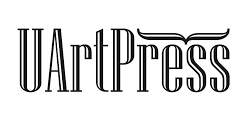Arta actorului și transmiterea mesajului în teatru contemporan
DOI:
https://doi.org/10.46522/CT.2024.02.06Keywords:
theater, acting, impact, cultural/social messagesAbstract
Actor’s Art and Message Delivery in the Age of Social Messaging
Our article examines the delicate balance between interpretive art and the ideological dimension of contemporary theater, with a particular focus on the actor’s role in conveying social and political messages. Starting from the central question – what unifies the diversity of forms, methods, and goals in contemporary theater? – the analysis identifies the art of acting as the indispensable core of theatrical practice. By integrating classical theoretical perspectives (Stanislavski, Brecht, Grotowski) and applied analyses of emblematic theatrical productions, the article explores how the actor bridges the aesthetics of the performance with its impact on the audience. Additionally, the study reflects on the importance of performance quality in productions with strong social messages, demonstrating that the absence of authentic acting risks diminishing the ideological impact and eliciting rejection from the audience. Personally, I consider the art of acting not merely a means of expression but the foundation that ensures the coherence and depth of theater, regardless of its technological or ideological context. The conclusions reaffirm the actor’s relevance in contemporary theater as a living art form that integrates aesthetics with social dimensions,offering audiences transformative experiences rooted in authentic and profound connections.
References
Artaud, Antonin, Teatrul și dublul său, în românește de Voichița Sasu și Diana Tihu-Suciu, Cluj Napoca, Editura Echinox, 1997.
Berger, John, Ways of seeing, London, Penguin Books Ltd., 1972.
Cardwell-Rambo, Markee, Wilson and musical collaboration: the dramaturgy of music and musicians in Robert Wilson’s practice, Mlitt(R) thesis, University of Glasgow, 2013.
Crișan, Sorin, Teatru și cunoaștere, Cluj-Napoca, Editura Dacia, 2008.
Diderot, Denis, Paradox despre actor. Dialoguri despre Fiul natural, traducere din limba franceză Dana Ionescu, București, Editura Nemira, 2010.
Evans, James Roose, Experimental Theatre From Stanislavsky to Peter Brook, London and New York, Routledge Taylor & Francis Group, 1989.
Fischer-Lichte, Erika, From Text to Performance: The Rise of Theatre Studies as an Academic Discipline in Germany, Cambridge, Cambridge University Press, 1999.
Gassner, John, Formă și idee în teatru modern, traducere de Andrei Băleanu, București, Editura Meridiane, 1972.
Grotowski, Jerzy, Spre un teatru sărac, traducere de George Banu şi Mirella Nedelcu-Patureau, București, Fundaţia Culturală „Camil Petrescu“ / Editura Cheiron, 2009.
Kitchen, Philip J.; Kerr, Gayle, Schultz, Don E. [and all], The elaboration likelihood model: review, critique and research agenda, European Journal of Marketing, vol. 48, no. 11/12, 2014, pp. 2033-2050.
Lehmann, Hans Thies, Teatrul postdramatic, traducere din limba germană de Victor Scoradeț, București, Editura Unitext, 2021.
Miron, Anca M.; Brehm, Jack W., „Reaktanz theorie – 40 Jahre spärer [Reactance Theory - 40 Years Later] “, în Zeitschrift für Sozialpsychologie, vol. 37, no. 1, 2006, pp. 9-18.
Plumley, Gavin, Designing “Good Theatre”, Caspar Neher (1897-1962), https://www.abbottandholder.co.uk/caspar-neher/, accesat la 03.11.2024.
Rancière, Jacques, The emancipated Spectator, translated by Gregory Elliott, London, New York, Verso Books, 2021.
Revermann, Martin, „The competence of theatre audiences in fifth- and fourth-century Athens“, in: The Journal of Hellenic Studies, vol. 26, November 2006, pp. 99-124.
Schiller, Friedrich, Scrieri estetice, traducere și note de Gheorghe Ciorogaru, București, Editura Științifică, 1981.
Stanislavski, Konstantin Sergheevici, Munca actorului cu sine însuși, traducere de Raluca Rădulescu, București, Editura Nemira, 2021.
Stanley Fish, Is There a Text in This Class? The Authority of Interpretive Communities, Cambridge, Massachusetts, Harvard University Press, 1980.
Downloads
Published
How to Cite
Issue
Section
License

This work is licensed under a Creative Commons Attribution 4.0 International License.

This work is licensed under a CC BY Creative Commons Attribution 4.0 International License, which permits any use, reproduction, distribution, self-archiving and citation of the work as long as the authors are credited. The complete bibliographical data of Theatrical Research Journal must also be indicated, which you can find in the How to cite section on this page. If possible, please also place a link leading to the original publication.
Copyright of the paper belongs to the author(s).




